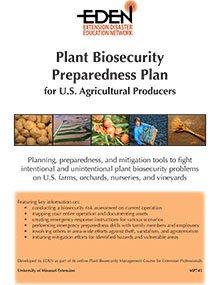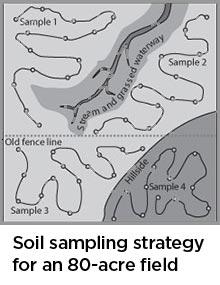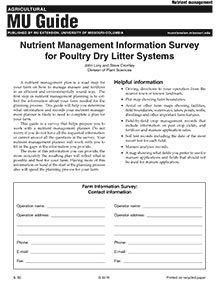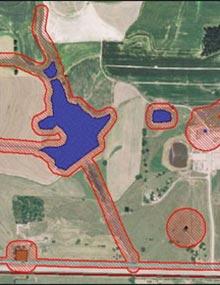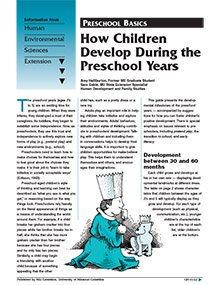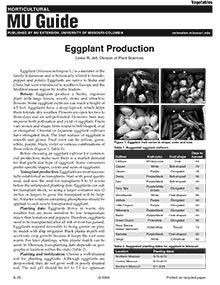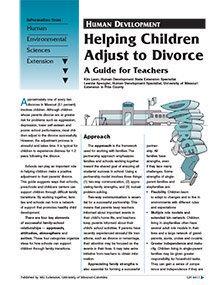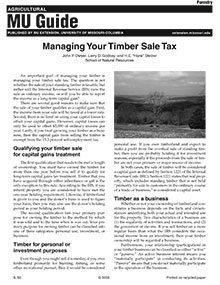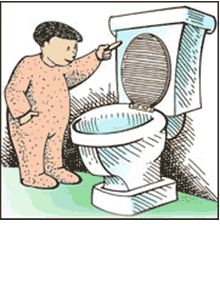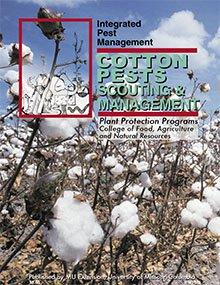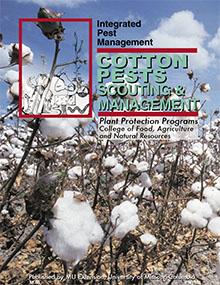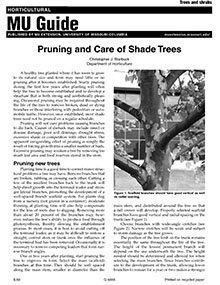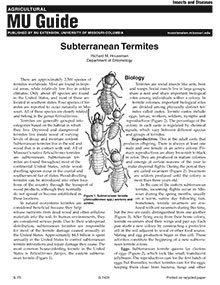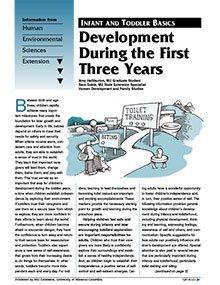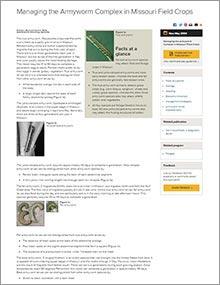Plant Biosecurity Preparedness Plan for U.S. Agricultural Producers
New
Editor's note
The following abstract describes a publication that is only available as a downloadable PDF.
Soil Sampling Hayfields and Row Crops
New
Collecting a representative soil sample is an important step in developing a nutrient plan for your farm. Make smarter management decisions and more efficient use of fertilizer nutrients by learning how to plan and take soil samples from your fields in th
Corn Insect Pests: A Diagnostic Guide
Reviewed
Partial version (736 KB)
Preschool Basics: How Children Develop During the Preschool Years
Reviewed
Preschoolers need to learn how to make their own choices. Visit our site for our Preschool Basics: How Children Develop During the Preschool Years resource.
Eggplant Production
New
Learn how to grow eggplant. Cultivar selection, planting, fertilizing, staking, harvesting and insect pest management are all covered in this University of Missouri Extension guide.
Helping Children Adjust to Divorce: A Guide for Teachers
New
Approximately 51% of divorces in Missouri involves children. Visit our site for our Helping Children Adjust to Divorce: A Guide for Teachers resource.
Missouri State and Local Taxes and Revenue: A Fifty-State Comparison for 2002
Revised
Editor's note
The following abstract describes a publication that is only available as a downloadable PDF.
Steps in Fertilizing Garden Soil: Vegetables and Annual Flowers
Revised
Learn how to ensure your garden soil has the nutrients plants need. Start with a soil test, fertilize according to the report, and follow the other steps outlined in this guide to enhance your soil’s fertility.
Missouri State and Local Spending: A Fifty-State Comparison for 2002
New
Editor's note
The following abstract describes a publication that is only available as a downloadable PDF.
Soil Sampling Pastures
New
Collecting a representative soil sample is an important step in developing a nutrient plan for your farm. The goals of your soil sampling plan should be to
Toilet Training
Reviewed
Cotton Pests: Scouting and Management - Page 4
New
Cotton diseases
Diseases, including nematodes, reduced cotton production in Missouri an estimated 8.7 million pounds in 2001, 19.6 million pounds in 2002, and 39.7 million pounds in 2003. The value of the loss in 2003 was $17.1 million. Clearly cotton diseases are a serious detriment to the cotton farmer's income and the economy of Missouri.
Cotton Pests: Scouting and Management
New
Cotton pest management scouting report (PDF)
Cotton Pests: Scouting and Management - Page 2
New
Insect management
Figure 3
Pruning and Care of Shade Trees
Reviewed
Most established shade trees do not need to be pruned regularly. But yearly pruning during the first few years after planting can help a tree become established and develop a strong, attractive structure. Learn when and how to prune and problems you might
Cotton Pests: Scouting and Management - Page 3
New
Beneficial insects
Honey bees and other insects help pollinate cotton. Cotton is primarily a self-pollinator, but it is partially pollinated by insects.
Subterranean Termites
Revised
Infant and Toddler Basics: Development During the First Three Years
Reviewed
Infants and toddlers grow up quickly. Visit our site for our Infant and Toddler Basics: Development During the First Three Years resource.
Managing the Armyworm Complex in Missouri Field Crops
New
Figure 1a
True armyworm.

